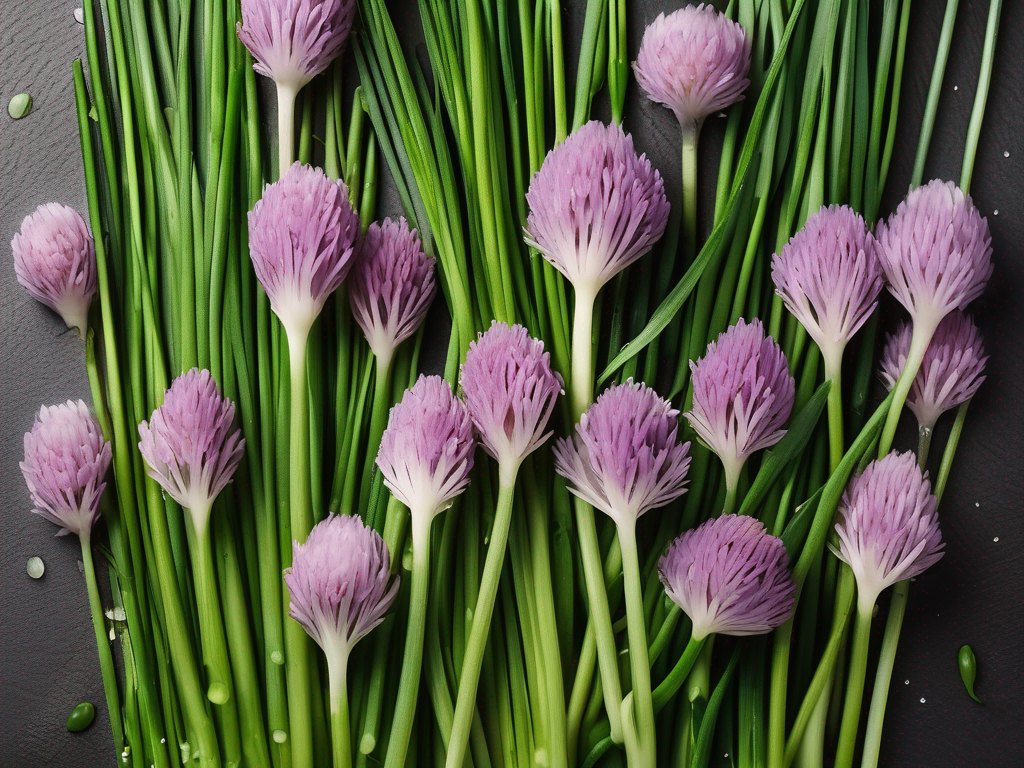
When to Toss Out Wilted Chives from Your Pantry
Get Your Free Food Safety Cheat Sheet
30 most common foods with instant answers. Print it and stick it on your fridge—completely free!
When to Toss Out Wilted Chives from Your Pantry
Chives are a versatile herb that can add a burst of flavor to a variety of dishes. Whether you grow your own or purchase them from the store, it's essential to know when to toss out wilted chives to ensure food safety and quality. In this blog post, we will discuss the signs that indicate your chives are no longer safe to consume and provide you with practical tips for proper storage to extend their shelf life. (Chives)
Signs of Spoiled Chives
Chives, like any fresh produce, have a limited shelf life. Here are some signs that indicate your chives have gone bad and should be discarded:
1. Wilted Appearance
- If your chives appear limp, wilted, or have dark spots, it's a clear indication that they have started to spoil.
2. Unpleasant Smell
- Fresh chives should have a mild, onion-like aroma. If you notice a foul or moldy smell when you sniff the chives, it's time to throw them away.
3. Slimy Texture
- Touch the chives gently. If they feel slimy or excessively moist, it's a sign of bacterial growth, and they should not be consumed.
4. Discoloration
- Any discoloration, such as yellowing or browning of the chives, is a visual cue that they are past their prime and no longer safe to eat.
5. Mold Growth
- Visible mold on the chives, either on the leaves or stems, is a definite sign of spoilage. Mold can produce harmful toxins that can make you sick if consumed.
Proper Storage Tips for Chives
To prolong the freshness of your chives and reduce the chances of spoilage, follow these practical storage tips:
1. Refrigerate Properly
- Store fresh chives in the refrigerator to maintain their crispness and flavor. Place them in a resealable plastic bag or wrap them in a damp paper towel before refrigerating.
2. Trim the Ends
- Trim the ends of the chives before storing them to prevent moisture loss and wilting. This simple step can help extend their shelf life.
3. Freeze for Long-Term Storage
- If you have an abundance of chives, consider freezing them for long-term storage. Chop the chives into small pieces and freeze them in an airtight container or freezer bag.
4. Use an Airtight Container
- Transfer store-bought chives or freshly cut chives into an airtight container to protect them from moisture and odors in the refrigerator. This will help maintain their freshness.
5. Check Regularly
- Inspect your chives regularly for any signs of spoilage. Remove any wilted or discolored pieces promptly to prevent the spread of mold or bacteria.
Conclusion
Knowing when to toss out wilted chives from your pantry is crucial for maintaining food safety and quality. By recognizing the signs of spoilage and following proper storage practices, you can enjoy fresh chives in your culinary creations for longer. Remember to refrigerate, trim, and inspect your chives regularly to ensure they stay fresh and flavorful. By taking these simple steps, you can reduce food waste and enhance the taste of your dishes with vibrant, aromatic chives.
For more information on chives, check out our detailed guide on chives. (Chives)
Related Posts
Here are some other articles you might find helpful:
- Easy Tips for Reusing Cooked Bacon Leftovers in New Recipes
- Preserving Chives from Your Garden: Top Tips for Long-lasting Flavor
- How to Store Chives in the Fridge for Longer Freshness
- When to Discard Wilted Chinese Chives from Your Refrigerator
- Preserving Chinese Chives for Longer Shelf Life: Easy Methods
Authoritative Food Safety References
These agencies and university labs inform every tip and health precaution we publish.
USDA FoodKeeper – Cold Storage Guidelines
Official refrigerator, freezer, and pantry timelines maintained by the U.S. Department of Agriculture.
Visit USDA FoodKeeperFDA Produce Safety Rule & Grower Guidance
Field-to-fridge handling practices that prevent contamination of fruits, vegetables, and leafy greens.
Visit FDA Produce SafetyCDC Foodborne Illness Prevention Hub
Surveillance-backed guidance on pathogens, symptoms, and steps to reduce foodborne illness risk.
Visit CDC Food SafetyUC Davis Postharvest Technology Center
University research detailing optimal storage atmospheres for produce after harvest.
Visit UC Davis PostharvestPenn State Extension – Home Food Preservation & Safety
Peer-reviewed extension bulletins on safe canning, chilling, and reheating practices.
Visit Penn State ExtensionGet Your Free Food Safety Cheat Sheet
30 most common foods with instant answers. Print it and stick it on your fridge—completely free! Want more? Upgrade to the complete guide with 70+ foods.
Scan your food directly and get instant safety info using our AI-powered camera feature.